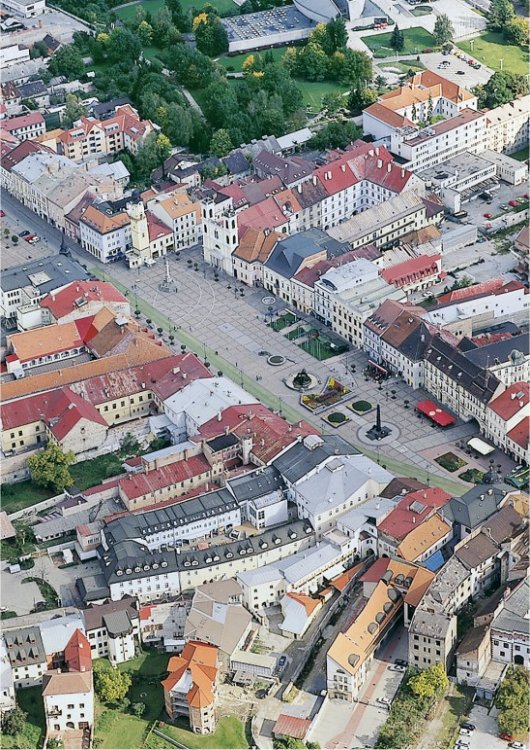The town of Banska Bystrica is situated in the valley of the Hron river, where three important mountainous chains join themselves: the Nizke Tatry (Low Tatra), the Velka Fatra (the High Fatra) and the Slovenske Rudohorie (the Slovak Metalliferous Mounts). The story of the town goes back to the period of the extraction of the gold and of the copper in this zone. The first written record of the existence of the town dates from 1255, when King Bela IV granted to Banska Bystrica the free and independent direction town of privilege.
Soon new farmers from the Germany, together to the original inhabitants of the place, developed new technologies for the extraction of numerous precious metals, and later on also of numerous quantitative the copper. From 1475 the history of the town was bound to the Thurzo family. To the end of the 15th century the entrepreneur Alexei Thurzo together with Jacob Fugger from Augsburg were based on the first international enterprise of copper in Europe.
 The prosperity of the town of Banska Bystrica is testified still today from the constructions of grandiose middle-class houses in gothic and renaissance style, make build from the rich entrepreneurs of the period. In the 1589 the town was encircled completely from town-walls building in stone, with bastions and gates of entrance. The stone fortification had protect the city against the attacks of the Turks. In the 16th century the town-walls building was perfected from renaissance Italian constructors.
The prosperity of the town of Banska Bystrica is testified still today from the constructions of grandiose middle-class houses in gothic and renaissance style, make build from the rich entrepreneurs of the period. In the 1589 the town was encircled completely from town-walls building in stone, with bastions and gates of entrance. The stone fortification had protect the city against the attacks of the Turks. In the 16th century the town-walls building was perfected from renaissance Italian constructors.
In the 17th century the town was devastated from numerous fires, pillages and epidemics. The 18th century to the contrary, above all carried to the city a relief and economical above all prosperity. In the 1776 Banska Bystrica became the center of the Roman-catholic diocese and to the end of the century also the center of the Region district. In the XIX century the middle-class houses had been built higher and their facades had been modernized according to the criterions of the period.
A very important chapter in the history of the town has been carried out during the second world war, when Banska Bystrica became the center of the anti-fascist resistance and the political and military center of the Slovak National Uprising..





